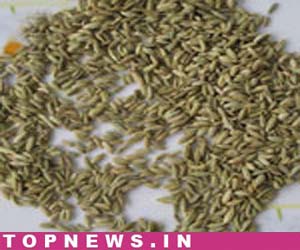Commodity Trading Tips for Jeera by KediaCommodity
 Jeera October contract dropped Rs 92.5 and settled at Rs 13920 per quintal as recent rains in Gujarat state, the top grower of the commodity, boosted prospects of higher sowing amid lacklustre demand in spot markets. Most farmers in Gujarat start planting of jeera in October and recent rains have increased the moisture level in the soil, which means farmers could plant the crop in more areas and this is impacting sentiment. Rains in Gujarat were above normal in the week to Sept. 5 and more rains are expected in the next 2-3 days. Jeera is a winter crop sown from October and farmers depend on the rains to moisten the land for sowing. The total arrivals remained unchanged at 4,000 bags, while demand was seen for around 8,000 bags against 5,000 bags. Export in April 2011 was 2,369 tons. The export rose by 6% in 2012 compared to the previous year, according to Spices Board of India. Production of Jeera in 2011-12 is expected to be around 40 lakh bags as compared to 29 lakh bags in 2010-11(each bag weighs 55 kgs). Steady arrivals and prices reported in the Unjha mandi last one month with arrivals in the range of 2,000-4,000 bags a day. In Unjha, a key spot market in Gujarat, jeera gained 25 rupees to end at 14800 rupees per 100 kg. The contract made intraday low of Rs 13770 a kg and high of Rs 14077.5 a kg. Support for jeera is at 13768 below that could see a test of 13615. Resistance is now seen at 14075 above that could see a resistance of 14230.
Jeera October contract dropped Rs 92.5 and settled at Rs 13920 per quintal as recent rains in Gujarat state, the top grower of the commodity, boosted prospects of higher sowing amid lacklustre demand in spot markets. Most farmers in Gujarat start planting of jeera in October and recent rains have increased the moisture level in the soil, which means farmers could plant the crop in more areas and this is impacting sentiment. Rains in Gujarat were above normal in the week to Sept. 5 and more rains are expected in the next 2-3 days. Jeera is a winter crop sown from October and farmers depend on the rains to moisten the land for sowing. The total arrivals remained unchanged at 4,000 bags, while demand was seen for around 8,000 bags against 5,000 bags. Export in April 2011 was 2,369 tons. The export rose by 6% in 2012 compared to the previous year, according to Spices Board of India. Production of Jeera in 2011-12 is expected to be around 40 lakh bags as compared to 29 lakh bags in 2010-11(each bag weighs 55 kgs). Steady arrivals and prices reported in the Unjha mandi last one month with arrivals in the range of 2,000-4,000 bags a day. In Unjha, a key spot market in Gujarat, jeera gained 25 rupees to end at 14800 rupees per 100 kg. The contract made intraday low of Rs 13770 a kg and high of Rs 14077.5 a kg. Support for jeera is at 13768 below that could see a test of 13615. Resistance is now seen at 14075 above that could see a resistance of 14230.
Trading Ideas:
Jeera trading range for the day is 13616-14230.
Jeera dropped as recent rains in Gujarat state boosted prospects of higher sowing amid lacklustre demand
Most farmers in Gujarat start planting of jeera in October and recent rains have increased the moisture level in soil
NCDEX accredited warehouses jeera stocks dropped by 123 tonnes to 10326 tonnes.
In Unjha, a key spot market in Gujarat, jeera gained 25 rupees to end at 14800 rupees per 100 kg.